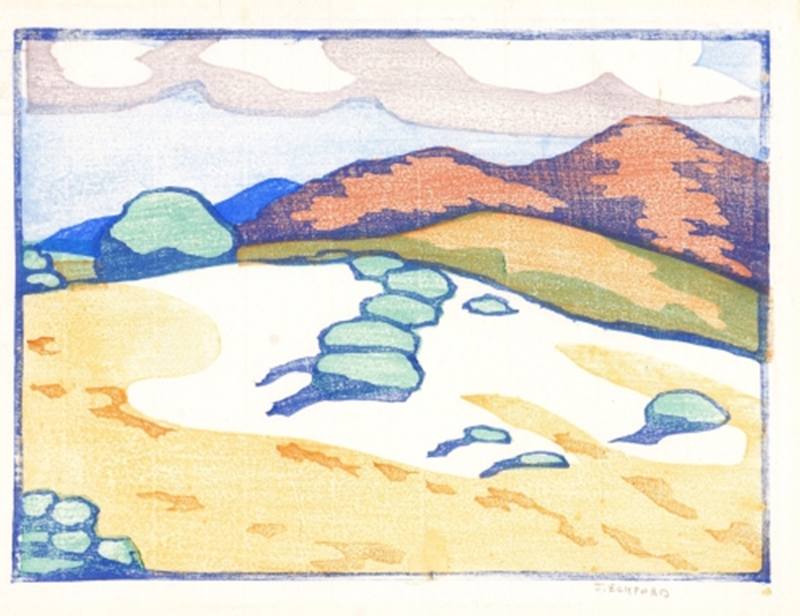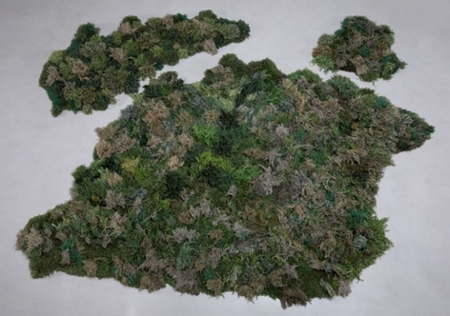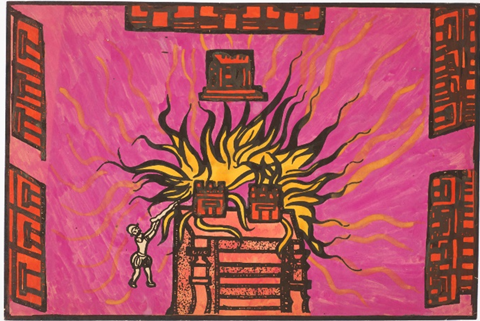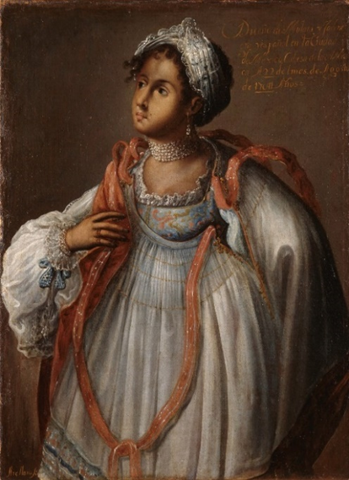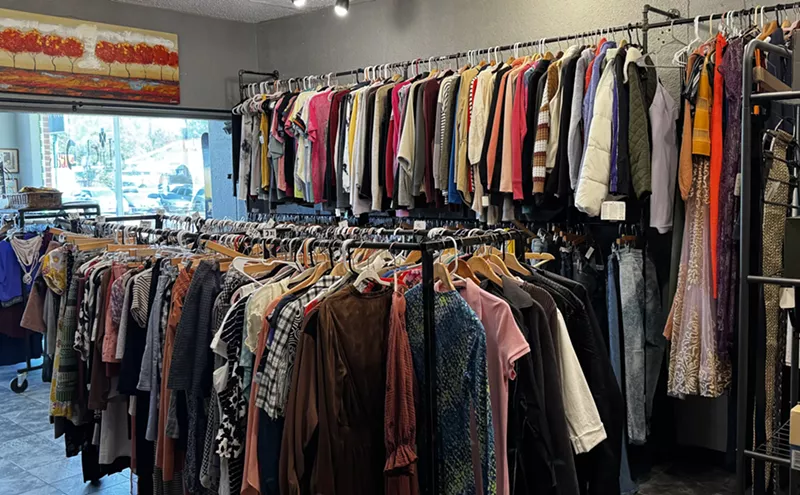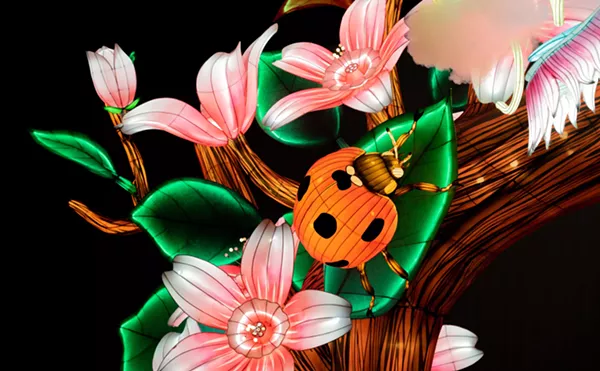Growing the museum's collections is a constant process in extension and refinement, according to director Christoph Heinrich and Angelica Daneo, the museum's chief curator. "We have always collected with an eye on current art, and as a result, many of our acquisitions are contemporary," they say in a statement to Westword. "Also important to mention is that some departments cover an immense number of cultures, for instance, the Arts of Asia collection, where we will never be done collecting. Others, like Photography Arts, are relatively new and we are still building and strengthening the foundation of those collections."
Here are eight of the DAM's most interesting new pieces; all are currently on view except "Rendering of a Mulatta."
Woodblocks by Jessie Jo Eckford
During her lifetime, Dallas-based artist Jessie Jo Eckford traveled extensively throughout the American Southwest, along the East Coast and around the world. Her woodblock prints often depict scenes from her travels, including a piece showing the White Sands of New Mexico from the 1930s, which was gifted to the museum.
Hand-tufted Wool Carpet by Alexandra Kehayoglou
The DAM acquired Argentine textile artist Alexandra Kehayoglou's hand-tufted wool carpet, depicting a small fragment of the biodiverse wetlands in the Paraná River Delta near Buenos Aires, an area undergoing ecological change because of urban growth, unsustainable agricultural practices and climate change. “If activism has the task of ringing the alarm, art and design can offer ways to connect us with something beyond. Something more spiritual,” explains Kehayoglou in a DAM announcement of the acquisitions. “We must hold on to hope... hope offers a path forward.”
Studies by Leslie Tillett
Of the Arts of the Ancient Americas department's 118 acquisitions in the past year, 112 were gifted by the family of artist Leslie Tillett. The pieces represent artifacts, research documents and hundreds of reproductions from the Florentine Codex and the writings of Bernal Diaz and others who contributed to the final tapestry. The studies are featured in Ink & Thread: Codices and the Art of Storytelling, which is currently on view.
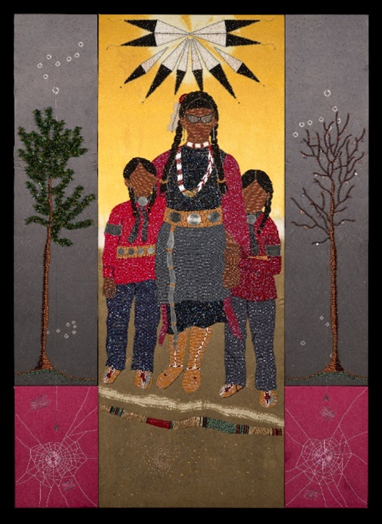
Teri Greeves of the Kiowa Tribe used plant material from the Northern and Southern Plains regions of what is today the United States to hand-dye the background composition of "Sons of the Sun."
DAM
The Native Arts department acquired seventeen artworks last year, all by Indigenous women. Teri Greeves of the Kiowa Tribe used plant material from the Northern and Southern Plains regions of what is today the United States to hand-dye the background composition of "Sons of the Sun." She then beaded imagery of the Half Boys — important protagonists and holy beings in Kiowa storytelling — as well as their Kiowa mother and their father, the Sun, creating her largest work to date at eight-by-six feet.
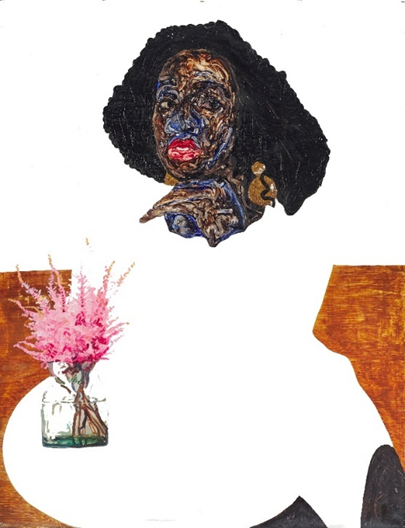
In "Pink Astilbe," the spare scene contrasts with the rich texture of the artist's painting technique, giving the seated figure a palpable energy.
DAM
Ghanaian artist Amoako Boafo creates lush portraits that celebrate beauty, confidence and joy. In "Pink Astilbe," the spare scene contrasts with the rich texture of the artist's painting technique, giving the seated figure a palpable energy. "Her confident gaze suggests a woman unapologetically owning the body and space she inhabits," according to the DAM. The painting was the inaugural acquisition funded through the Black Arts Collective.

Sano Keisuke's "Budding of Recollection" comments on the universal notions of attachment and memory.
DAM
Sano Keisuke's "Budding of Recollection" features iridescent strips of mother-of-pearl on a domed lid, commenting on the universal notions of attachment and memory. Crowning the box is a minuscule finial. "By treasuring an object and stowing it away, we, in effect, instigate a process of forgetting," Keisuke notes in the DAM announcement.

Nancy Hemenway Barton was an American artist who specialized in textile wall sculptures created from a wide range of fabrics sourced from indigenous weaving communities around the world.
DAM
Three works by contemporary American artist Nancy Hemenway Barton entered the Textile Arts and Fashion Department. Barton specialized in textile wall sculptures created from a wide range of fabrics sourced from indigenous weaving communities around the world; this donation was made possible by the late artist's sons. The three pieces are on view as part of Confluence of Nature: Nancy Hemenway Barton, which opened February 16.
"Rendering of a Mulatta," attributed to Manual de Arellano
The 1711 painting "Rendering of a Mulatta," attributed to Manuel de Arellano, is one of the most widely reproduced Spanish Colonial paintings. It's a rare depiction of an Afro-Mexican woman dressed in traditional garments that were worn exclusively by women of African descent.
Learn more about the acquisitions at denverartmuseum.org.

